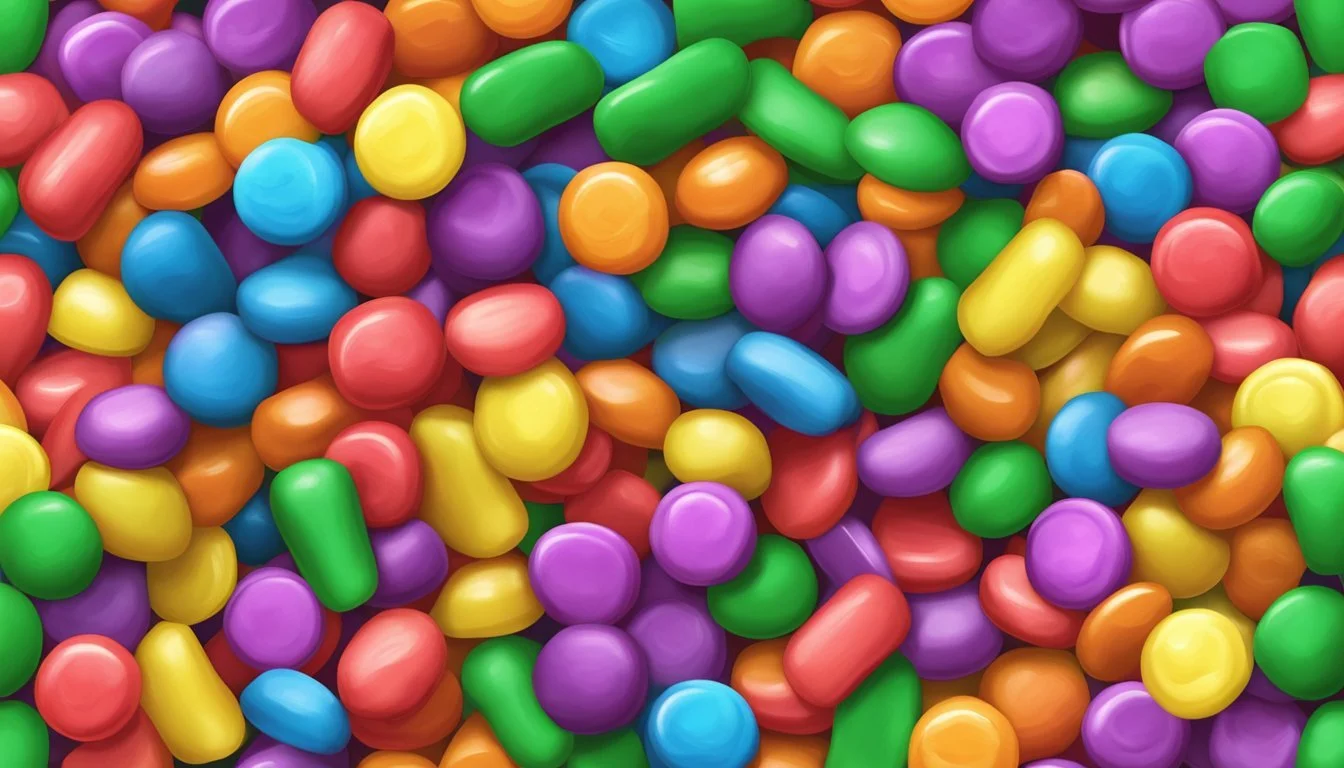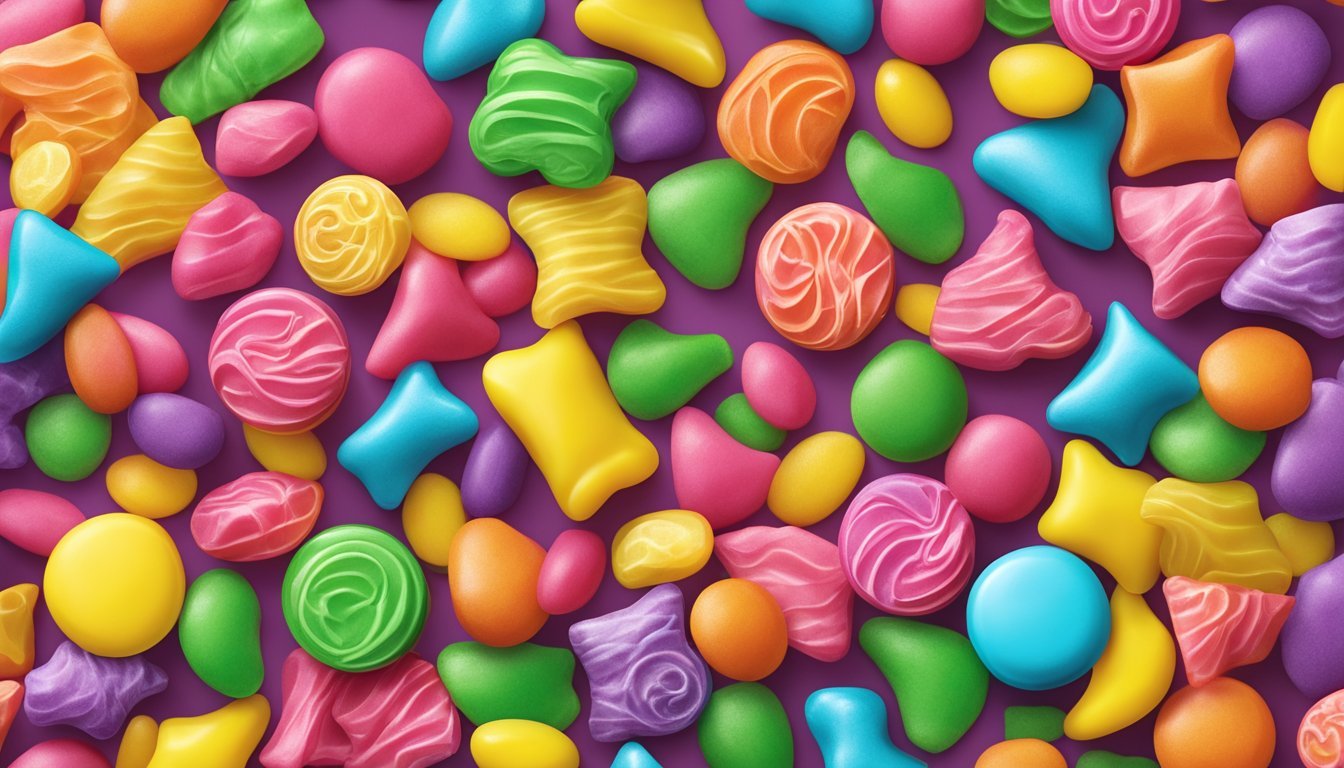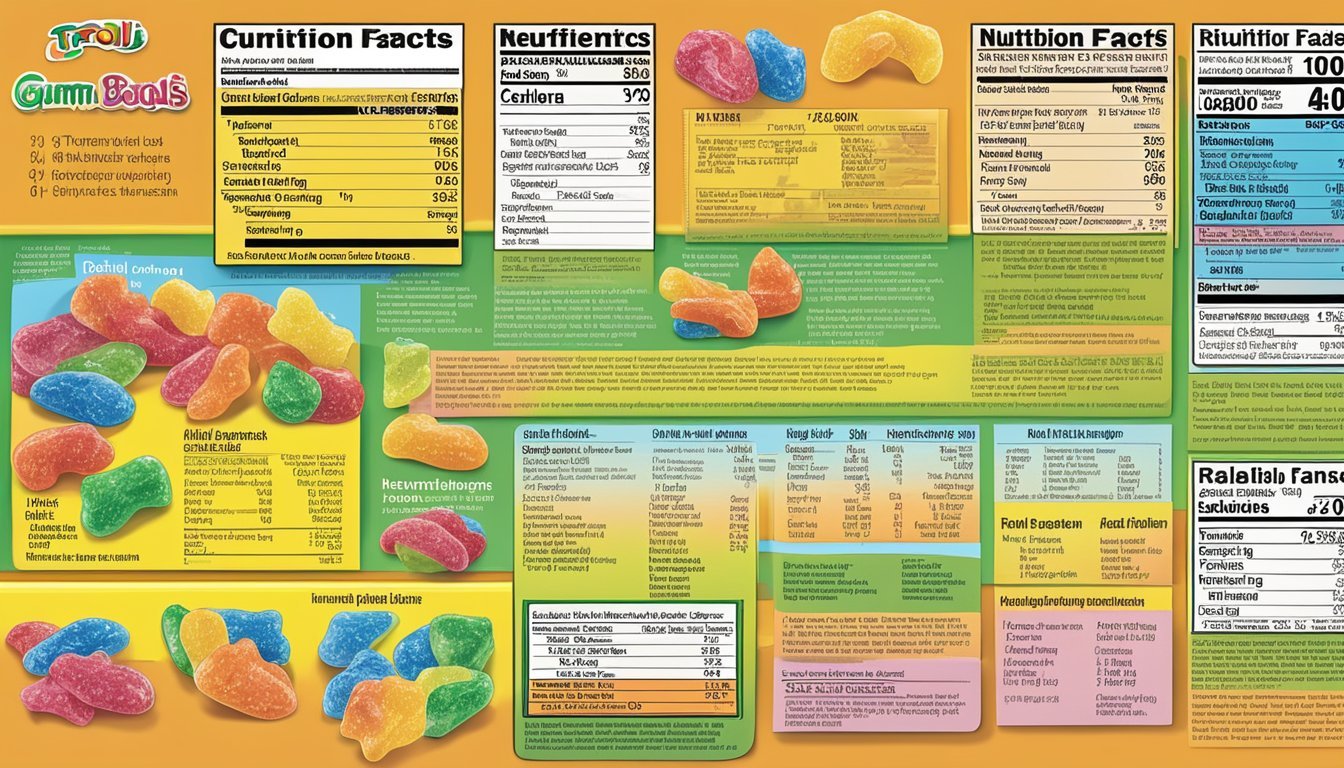How Long Do Trolli Gummies Stay Fresh?
Shelf Life and Storage Tips
Trolli is a brand that has made a significant mark in the candy industry with its distinctive gummy candies that offer a blend of sour and sweet flavors. These candies, notably the Sour Brite Crawlers which are shaped like worms, are not just popular for their taste but also for their chewy and stretchy texture. As with most confectioneries, consumers are often curious about the shelf life of these treats and when they should be consumed for optimal quality.
Trolli gummy candies are generally best when consumed within six to eight months if stored in a pantry or refrigerator, and can last up to a year if kept in the freezer. It is crucial to store them in a cool, dry area to maintain their quality and flavor. The shelf life can vary depending on the specific type of Trolli candy as well as the storage conditions, but adherence to these guidelines ensures that the candies retain their intended taste and texture.
Trolli Brand Overview
Trolli is a renowned confectionery brand known for its playful and inventive gummy candies. Originating in Germany, the company has expanded globally, maintaining a significant market presence and a rich history of development.
History and Development
The foundation of Trolli traces back to Germany, where Willy Mederer established the brand in the 1940s. The brand's initial growth phase during the 1950s and 1960s involved an expansion of the product range and an increase in manpower to 150 staff. Originally sold under the Wilmed brand, the candies encapsulated Willy Mederer's vision for confectionaries. Trolli GmbH registered the 'Trolli' brand name in 1975, which later in 2012 became the company's official trading title. The Mederer Group has been instrumental in Trolli's development, which includes sub-brands like eFruti.
Trolli has been acknowledged for its innovation in the candy industry, receiving the prestigious Candy Kettle Award. The brand has established manufacturing facilities beyond its German origins, with factories situated in Spain, Indonesia, China, Czech Republic, and Europe at large. These global sites include key locations such as Boizenburg and Creston, Iowa, with the latter resulting from a merger with Favorite Brands International.
Trolli's Market Presence
Trolli's brand portfolio is extensive, including popular products like the Trolli-Burger and operating under the umbrella company, Ferrara Candy Company, after various mergers with companies such as Kraft Foods and Farley's & Sathers Candy Company. A strategic acquisition by Multi Joyco, a part of the Mederer Group, further solidified Trolli's foothold in the confectionery market.
Today, Trolli enjoys a market presence in over 80 countries, offering an array of gummy candies that appeal to diverse tastes and preferences. The brand is particularly prominent in Europe and has designated divisions like Trolli Iberica S.A. for managing its operations in different regions. Through a combination of strategic growth and playful product innovation, Trolli continues to be a leading player in the candy industry, with a strong reputation for quality and creativity.
Product Range
Trolli's product range boasts an impressive variety of gummy candies that tantalize the palate with their unique shapes and diverse flavor spectrum.
Variety of Shapes
The Trolli brand is synonymous with inventive shapes that set them apart in the gummy candy market. Their Sour Brite Crawlers are a classic staple, offering a twisty, worm-like shape that's become iconic. Trolli doesn't stop there; they continuously innovate, creating a myriad of shapes to appeal to a broad audience, ranging from traditional gummy bears to more whimsical designs like burgers, spiders, and even smartphone-shaped treats.
Flavors Spectrum
Trolli gummy candies are distinguished by their bold flavor profiles that include a blend of sweet and sour tastes. The range of flavors spans from the original fruity mix to exotic combinations. Key flavors include cherry, lemon, lime, orange, strawberry, and various berry combinations. Every piece of Trolli candy is carefully crafted to balance its gelatin-based body with a burst of flavor, ensuring that each product, whether it be their classic Sour Brite Crawlers or a seasonal variant, delivers a consistent and enjoyable eating experience. While the sour candy options provide a tangy kick, the calorie content is kept transparent for those conscious about their intake.
Ingredients and Nutritional Information
Trolli gummy candies are known for their distinctive chewy texture and a mix of sweet and sour flavors. Consumers should be mindful of the nutritional content and key ingredients that may have dietary implications.
Key Ingredients
Trolli gummy candies typically include the following key ingredients:
Sugars: Sucrose is used for sweetness, contributing to the calorie content.
Corn Syrup: Acts as a sweetener and gives the candies their soft texture.
Gelatin: Provides the chewy consistency typical of gummy candies.
Citric Acid and Lactic Acid: These contribute to the sour taste.
Natural and Artificial Flavors: Used to create a variety of flavors.
Colors: Artificial colors like Yellow 5, Blue 1, Red 40, and Yellow 6 are commonly used to make the candies visually appealing.
Sodium Citrate: Used as a flavor enhancer and to maintain stability.
Health and Dietary Considerations
When considering the nutritional impact of Trolli gummy candies, it is important to note:
Sugar Content: One serving can contain significant amounts of sugar, which is a consideration for those monitoring sugar intake.
Gluten & Allergens: While some gummy candies may not contain gluten, individuals should verify as formulations can vary. Products may contain allergens like egg, which should be considered by those with sensitivities.
Artificial Ingredients: The use of artificial flavors and colors may be a concern for those seeking natural ingredient options.
Sodium and Caloric Intake: The candies have a low sodium content but can contribute to caloric intake, which may be relevant for diet management.
It is recommended to read the product label for the most accurate and updated information regarding ingredients and nutritional values.
Production and Manufacturing
The production and manufacturing of Trolli candy are complex processes involving a blend of traditional techniques and modern technologies to ensure the distinctive taste and texture that customers expect. This section delves into the manufacturing process employed to create these popular fruit gummies and the strategic global locations of their production sites.
Manufacturing Process
Trolli utilizes starch mogul machines, which are essential in the making of their fruit gummy candies. These machines employ starch molding to shape the candy, an efficient method that contributes to the unique texture for which Trolli is known. Ingredients used in the candies go through a rigorous taste test to meet quality standards, ensuring that the flavors are consistent and the texture meets consumer expectations. Each candy is carefully crafted to appeal aesthetically and gustatorily to Trolli's diverse clientele.
Global Production Sites
Trolli operates several manufacturing plants worldwide, each strategically located to serve different markets efficiently. Their plant in Creston, Iowa is pivotal for the North American market. Trolli's presence in Europe is marked by manufacturing facilities in Fürth, Neunburg vorm Wald, and Hagenow, serving as major production hubs. To cater to markets in Australasia and the Middle East, production sites have been established in locations such as Valencia, Pilsen, and Jakarta. Trolli's partnership with Aldor in Colombia emphasizes their expansion strategy beyond traditional markets, adapting to regional tastes. The company had a memorable foray with a roadkill themed gummy candy, which has since been discontinued.
Cultural Impact and Consumer Perception
Trolli's confectionery, renowned for its sour, soft, and sweet characteristics, has been shaped by diverse cultural inclinations. This section examines how Trolli’s marketing strategies and product development reflect cultural preferences and consumer perception.
Marketing Efforts
Trolli utilizes culturally tailored marketing to appeal to different regions, understanding that a one-size-fits-all strategy does not work in the candy industry. In Asia, particularly in cities like Guangzhou, advertisements for Trolli products often align with local tastes and values. Sour Brite Crawlers, a sour and sweet candy, might be advertised highlighting the balance of flavors, which aligns with regional preferences for multifaceted taste profiles.
Asia-specific Campaigns: Trolli designs campaigns that resonate with Asian markets, emphasizing community and tradition during festive seasons.
Product Localization: The brand may alter its messaging to emphasize the soft textures of candies which are favored in some markets.
Controversial Products
Trolli has faced challenges with products that did not align with consumer expectations or cultural norms. For instance, the Trolli Roadkill candy, which featured gummy animals with tire tracks, sparked controversy due to its sensitive subject matter and was quickly pulled from the shelves.
Understanding Limits: Acknowledging cultural boundaries is crucial as it influences consumer perception and can impact brand reputation.
Adaptive Measures: Trolli’s responsiveness to such feedback is evident in its ability to retract and adapt its products to maintain a positive standing with its audience.
Through strategic marketing efforts and an awareness of cultural sensitivities, Trolli navigates the global candy market, ensuring that its sour, soft, and sweet products like the Sour Brite Crawlers and others in its original lineup are enjoyed by a diverse consumer base.
Flavor and Texture Analysis
Analyzing Trolli candies, one finds the interplay between flavor and texture integral to the product's identity. Whether discussing the tangy zest of sour candies or the sugary bliss of the sweet varieties, how the candy feels in the mouth is just as important as how it tastes.
Sour vs. Sweet
Sour Trolli candies, such as the Trolli Sour Brite Crawlers, typically include citric acid, lactic acid, and sodium citrate among their ingredients, which are responsible for the tart and tangy taste that stimulates the palate. Sour candies might also contain mixes of natural and artificial flavors to create complex taste profiles.
Sour Attributes Sweet Attributes Citric acid presence Higher sugar content Lactic acid for tanginess Smooth, less acidic flavor profile Distinct flavor combinations Often includes vanilla, berry, or citrus notes
On the other hand, sweet Trolli candies lean more heavily on sugar and other sweetening agents, with a focus on fruitier and more saccharine flavors. Sweet candies can sometimes have marshmallow or gummy components that give a soft, chewy texture, contrasting sharply with some of the firmer sour offerings.
The Role of Texture in Taste
Texture plays a pivotal role in how one experiences the flavor of Trolli candies. The firmness of a candy can affect how long the flavor lingers in the mouth, and thus, how long the candy 'lasts' in terms of taste experience. Different textures can also interact with the flavor ingredients to enhance or mute certain taste notes.
Texture Interaction with Flavor Soft Quick release of flavor, less chew time Firm Slower release, prolonged flavor experience Coating Sugar or sour powder can immediately impact taste
Trolli gummy bears, noted to be generally softer compared to other brands, may provide a quicker burst of flavor as they dissolve more readily on the tongue. On the contrary, a firmer texture as found in some sour Trolli candies might mean that the sourness is released more gradually, providing a lingering sour experience that evolves as one chews. Ingredients such as gelatin and the absence or presence of gluten can greatly affect the chewiness and resilience of the candies. Artificial and natural flavors, combined with the use of various colors, contribute not only to the visual appeal but also to the perception of taste, influenced by the texture of the candies.
When designers create products like the Trolli-Burger, these textural elements are configured to offer a multi-layered taste test, where the experience changes from the initial bite, through the chew, and to the aftertaste, which can be reminiscent of traditional flavors like grape or innovative combinations created through both natural and artificial flavors.
Shelf Life and Product Care
Understanding the shelf life and product care of Trolli gummy candies is important to ensure optimal freshness and taste. Proper storage is key, and awareness of best before dates aids in avoiding the consumption of expired candies.
Storage Recommendations
To maximize the shelf life of Trolli gummy candies, they should be stored in a cool, dry place. Exposure to high temperatures or direct sunlight can lead to the degradation of texture and flavor. Once opened, the candies are best kept in an airtight container to prevent the introduction of moisture, which can make the gummies harden or become sticky.
Temperature: Keep below 77°F (25°C).
Moisture: Avoid wet or humid environments.
Container: Use an airtight container after opening.
Best Before and Expiry
Trolli gummy candies come with a 'best before' date printed on the packaging, which indicates the point up to when the candies are expected to maintain their best quality. While they may not be unsafe to eat after this date, their optimal texture and flavor may diminish over time. The shelf life of unopened Trolli gummies generally ranges from 6 to 12 months; however, if they are kept under ideal conditions, they can last even longer, preserving their intended taste and consistency.
Best Before Date: Located on the package.
Shelf Life: 6 to 12 months unopened under proper storage conditions.
Consumers should avoid cooking or exposing Trolli gummies to high heat as this can cause them to melt and lose their distinct shape and texture.








